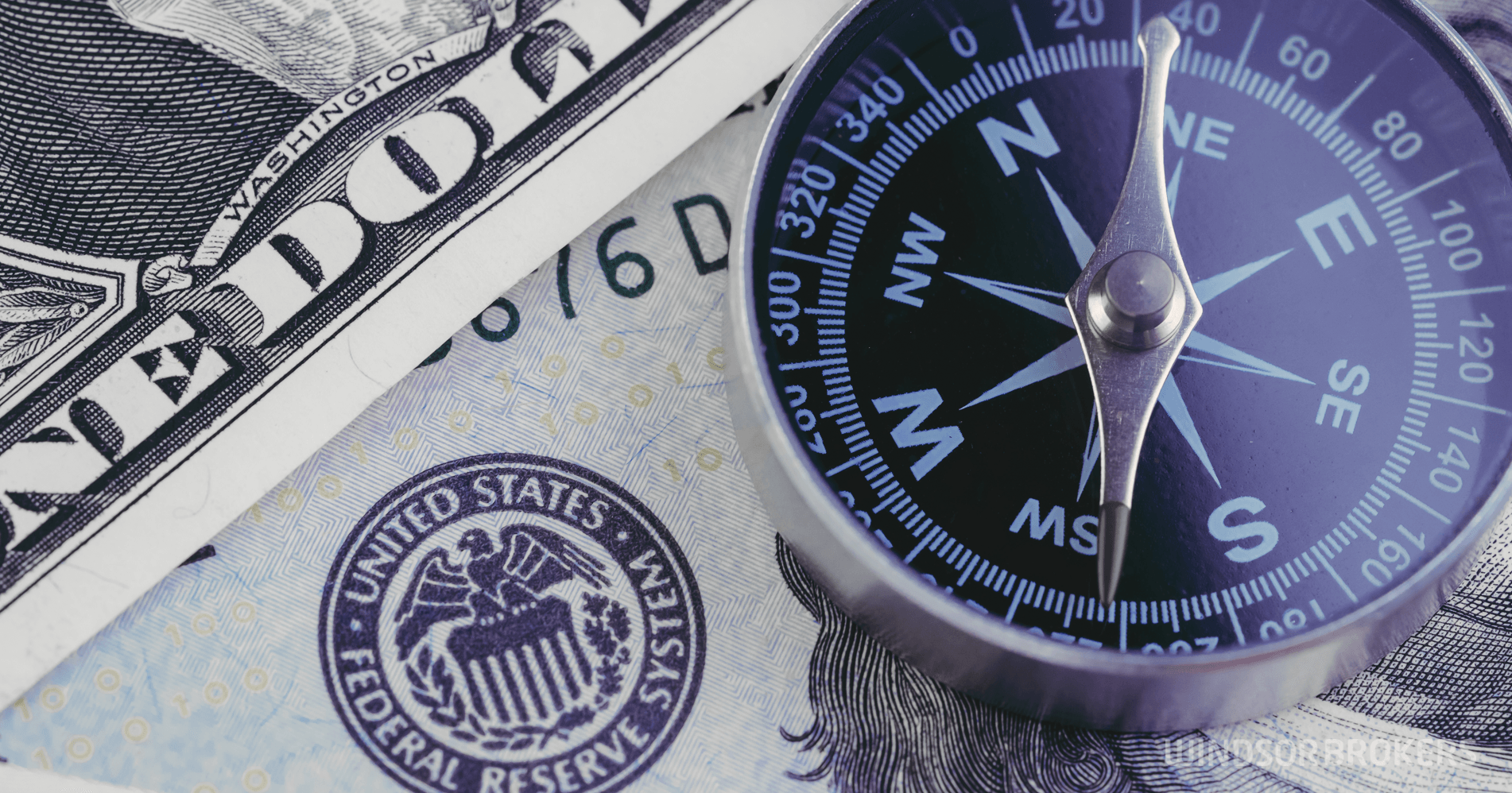Where is dollar going?
The US dollar made a good start in 2021 after sharp fall in 2020, but January’s bounce, driven by profit-taking and optimism of faster economic recovery, was short-lived.
The Dollar Index – which measures the performance of the dollar against six major currencies – was in steep downtrend during the most of 2020, falling around 7% for the year and hit the lowest in nearly three years.
The greenback spiked during March crisis as investors rushed into the traditional safe-haven asset, due to high uncertainty, but massive central bank support and prospects of coronavirus vaccine reversed the trend and sent the dollar sharply lower.
In comparison to 2007/2009 recession, when the dollar made wild gyrations, the action in 2020 was milder, due to global crisis caused by pandemic and similar policies of central banks and governments that include massive fiscal supports and ultra-low interest rates.
The main factors that influence dollar performance
Interest rates
The US Federal Reserve is expected to keep interest rates at record lows and continue asset purchases as the central bank made a shift in its policy in 2020, signaling that the interest rates will start to rise only when inflation makes significant move and rises to 2% target zone and until labor market conditions return to levels consistent with Fed’s assessment of maximum employment.
According to the central bank’s forward guidance, the downward pressure on longer-term rates is expected to persist and ultra-loose policy to stay in place until at least early 2023 that keeps grim outlook for the dollar.
Economic activity
The US economy contracted by 3.5% in 2020, due to severe impact of coronavirus pandemic. The gross domestic product slumped 33.3% in the second quarter, when the outbreak hit the United States, but rebounded 33.4% in the third quarter, as optimism about economic recovery rose.
New wave of Covid-19 and subsequent tough restrictive measures slowed the recovery greatly, resulting in 4% contraction in the fourth quarter of 2020.
The activity in the US manufacturing sector has slowed sharply in mid-2020, falling to the lowest levels in more than a decade, but managed to recover in the second half of the year, peaking at six-yar high in December.
Improving conditions in manufacturing sector counter more negative figures from services sector, which was hurt strongly by a new set of measures on the second wave of coronavirus.
Labor
The US employment was seriously hurt by the unprecedented impact of Covid-19 pandemic on the US labor sector, with the magnitude of job loss in March and April 2020, not seen since the end of the World War II.
The employment in the US slumped by 14.5% in 2020, compared to 6.3% drop during the 2007/2009 Great Recession, while the unemployment spiked at 14.7% last year, against 10% rise during the previous crisis period.
The US labor sector has lost 20.6 million jobs during the March lockdown, when the crisis peaked, with subsequent quick rebound in May and June, but renewed weakness seen in the July-December period, when the US non-farm payrolls were in a steady descend and hit the first negative result of -227K in December.
Mild and below expectations recovery in January suggested that rise in employment regained traction, but the pace of recovery remains slow and signaling prolonged period of recovery that had negative impact on the dollar and resulted in a recovery stall.
The jobless claims have significantly dropped from their 6.8 million peak in March, but the number of Americans filling for government’s unemployment benefits remains stubbornly high and above the highest of the 2007/2009 Great Recession.
Persisting weakness in the US labor sector signals that recovery process is going to be longer than initially anticipated and is going to move at much lower-than-expected pace.
Fiscal stimulus
The US government has already pumped around $3 trillion into the economy at the beginning of crisis, with $900 billion being added in December.
The aid from first packages has already drained and a long discussion about the new package, worth $ 1.9 trillion, much needed to keep the economy afloat, is underway in the US Congress.
The US lawmakers were so far unable to reach an agreement on a size of the package, despite strong warnings that the US faces a dangerous wave of bankruptcies and unemployment if it did not maintain fiscal support until the coronavirus-driven crisis ended.
The 2021 outlook
The outlook for the dollar for 2021 remains weak, with dollar expected to remain under increased pressure during the first half of the year, on anticipation that economic recovery is not going to gain pace during this period.
Although the coronavirus vaccine has been rolled out and immunization started in the US, it is expected to take time until it starts giving significant results in stopping the raging pandemic and bringing the life and economic activity back to the pre-pandemic levels.
Strong risk appetite in the market, driven by hopes of new fiscal aid package that would boost economic recovery, continues to lift US stock indices and pressure the dollar, with S&P500, Dow Jones and Nasdaq100 hitting new record highs and signaling further advance.
High oil prices also weigh on US dollar. The crude oil made significant recovery after historic fall during the March-April 2020 period, when oil prices hit zero level at one point.
Improved sentiment on rising expectations that recovery in global oil demand will speed up and return to normality after being slashed during the crisis, continues to lift oil prices and boost the risk sentiment.
The dollar index is pressuring key technical supports at $90/$88 zone, with stronger bearish acceleration expected on breach of these levels.
The weakness is expected to persist in coming months, with some relief for the greenback to be expected in the second half of the year if economic recovery picks up, although the most of market observers do not expect significant rise of the greenback this year.


